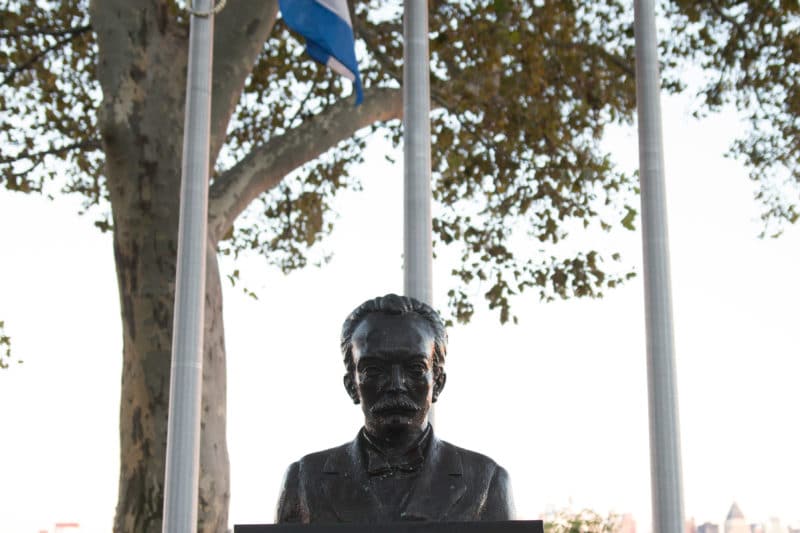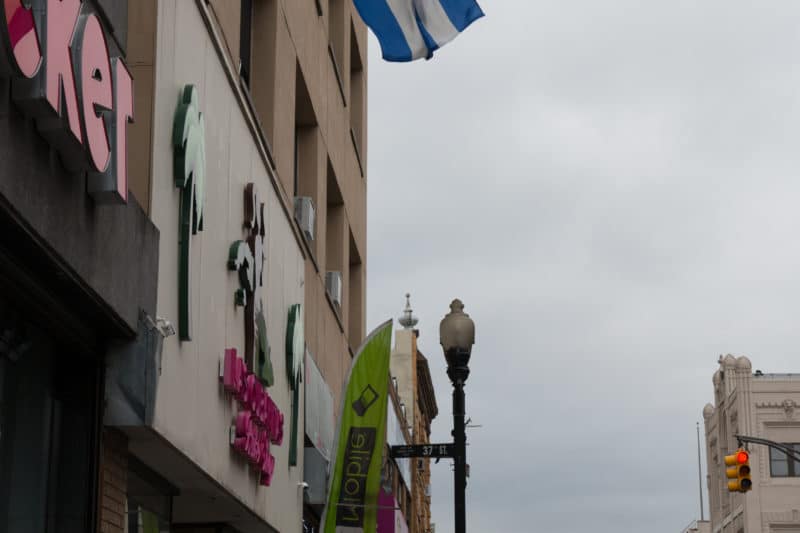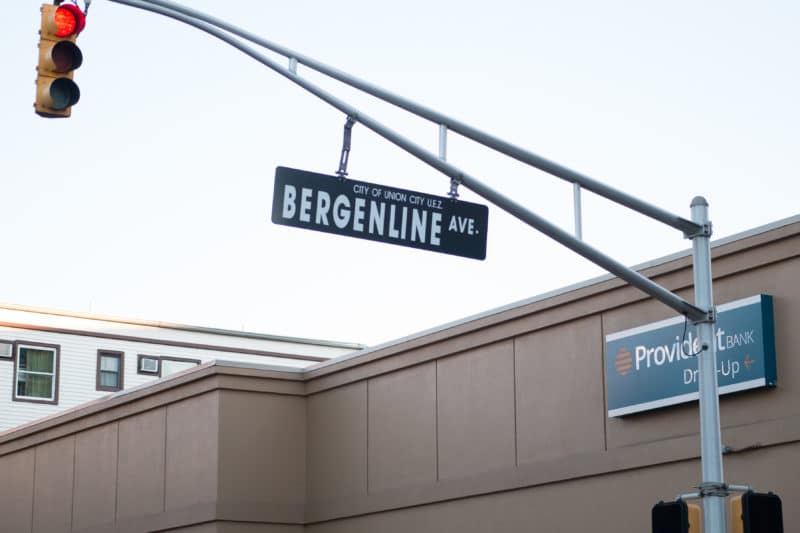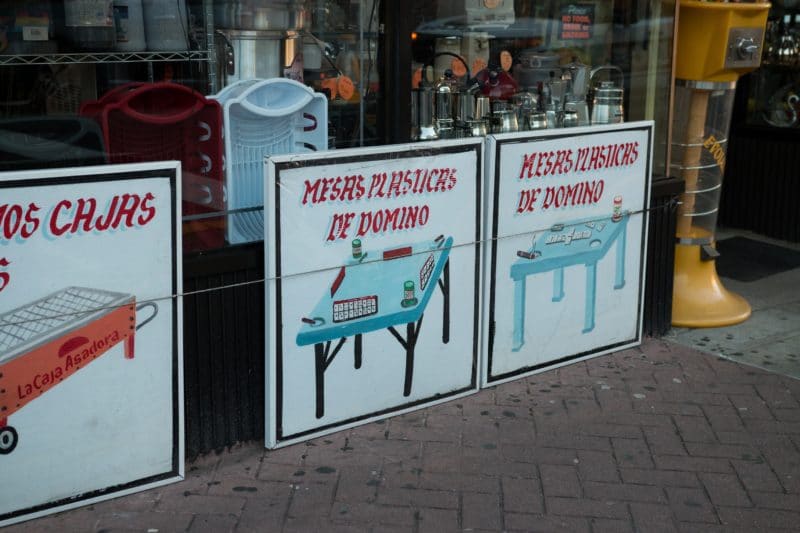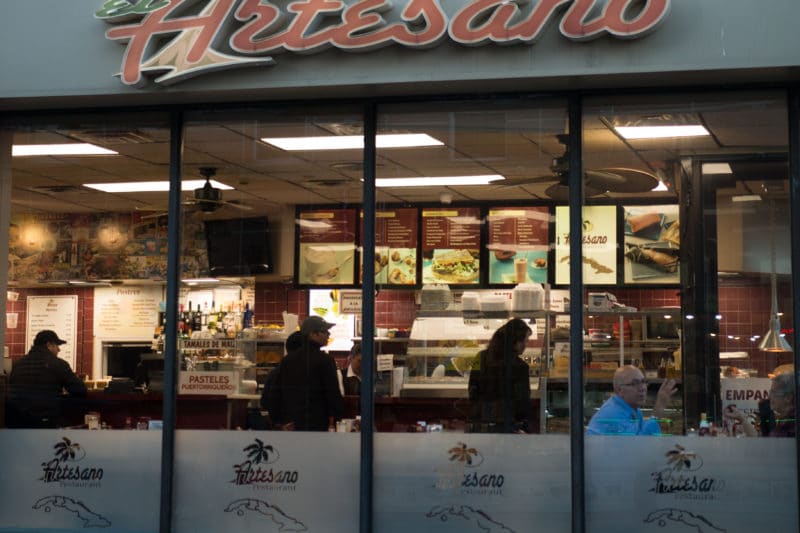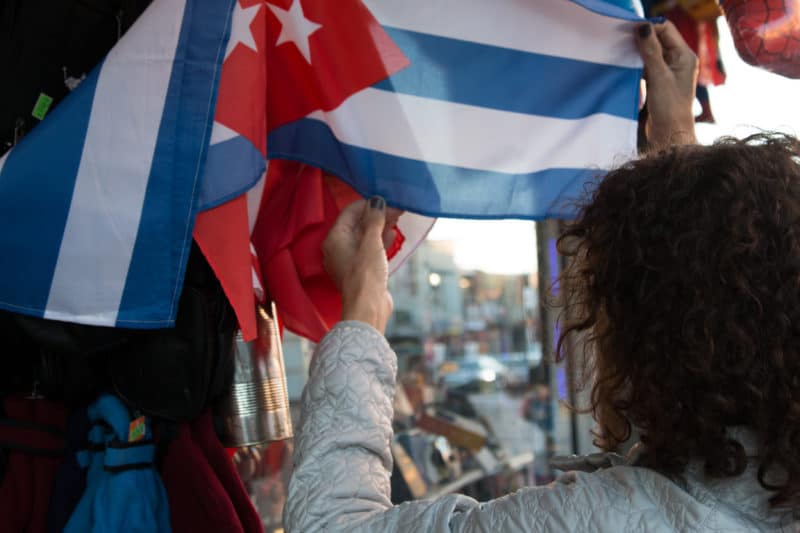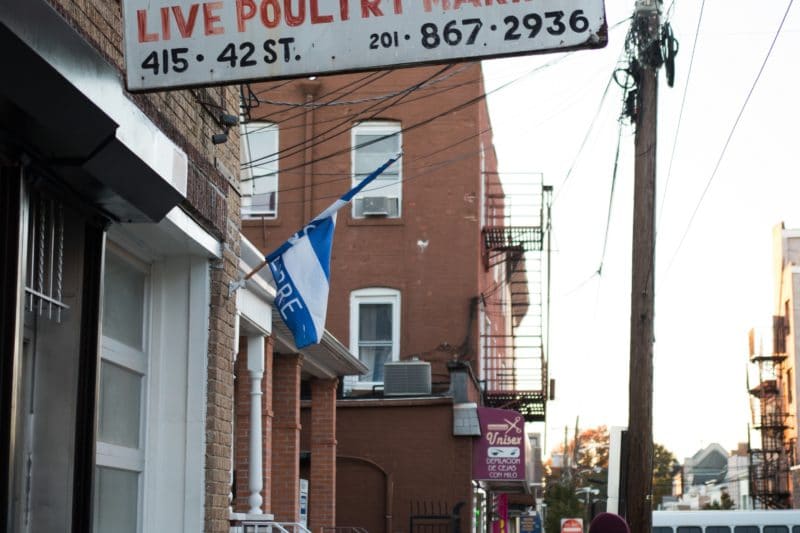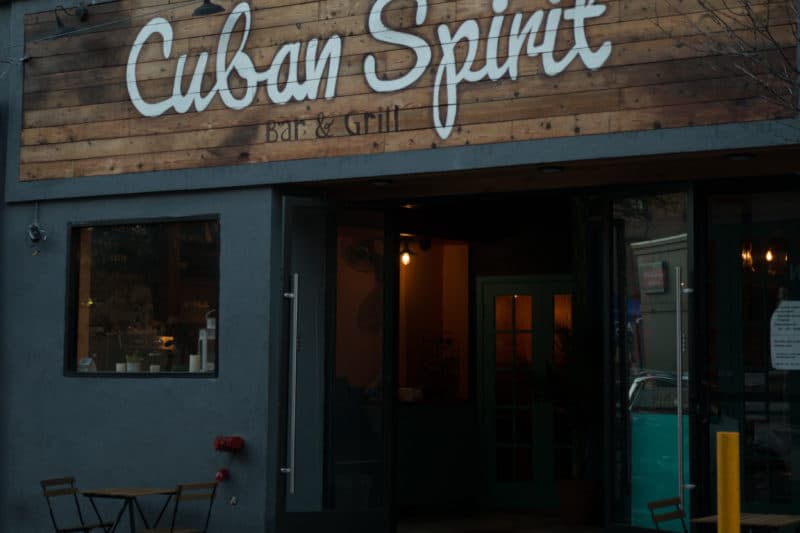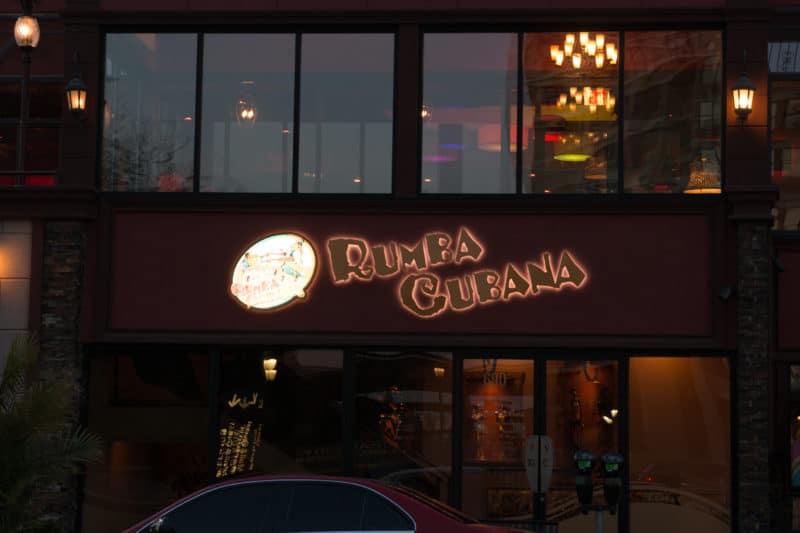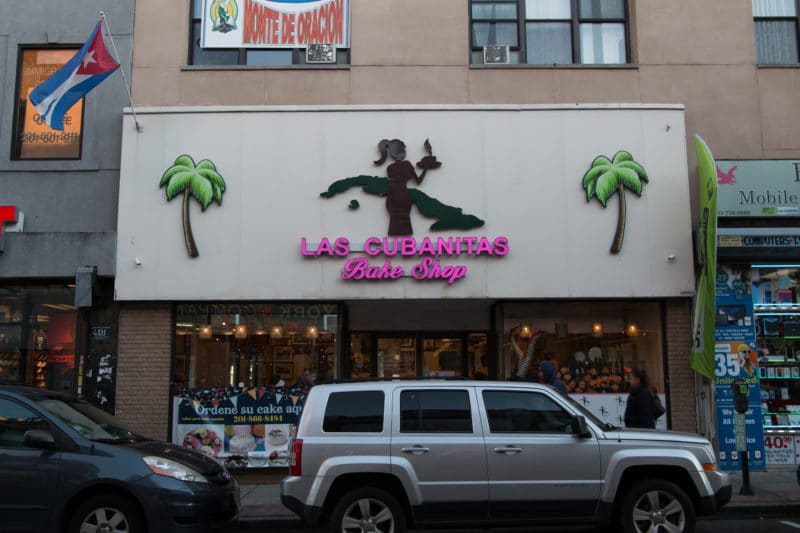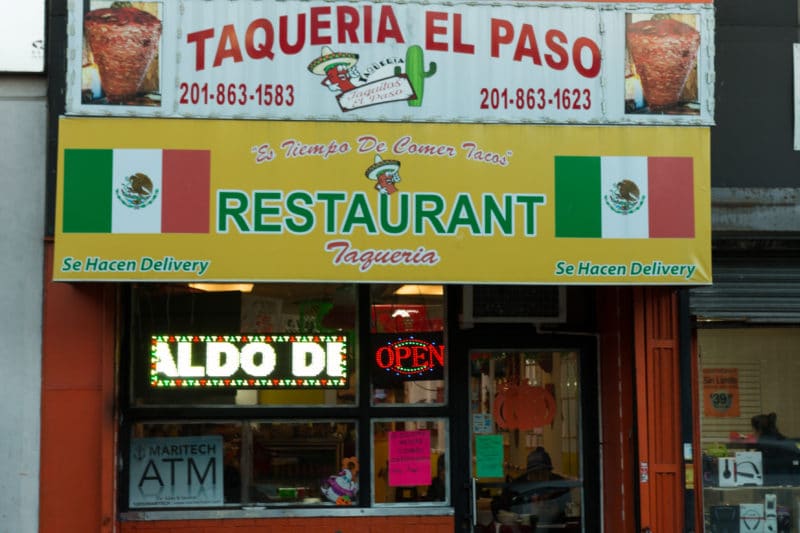A Home Away from Home
One Cuban reflects on his time spent in Hudson County.
‘Havana on the Hudson’ is the nickname given to Hudson County, New Jersey when Cuban immigrants flocked to the area during the 1960s and 70s. Cubans created a new life in America where they raised families, started businesses, and created a new life after fleeing their homeland. While the area’s demographics have changed drastically throughout the decades, it is still is home to many Latinos, today.
Rolando Barcia is one of many Cuban immigrants who moved to Hudson County, back then. Today, he revisits the area frequently and has noticed many changes that the area has faced throughout the decades.
“I felt like it was part of my country, being in Hudson County, surrounded by so many Cuban and Spanish people.”
– Rolando Barcia
Humans of Hudson County
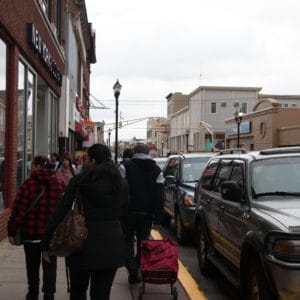 Hudson County, New Jersey has been home to many Hispanic communities throughout the years. In fact, the county has been nicknamed “Havana on the Hudson” due to its large Cuban population that migrated to the area during the 60s and 70s. Many Cubans have called Hudson County their home, have created businesses of their own, and have raised families here. They have carried their Cuban culture to New Jersey and began a new life in America among other fellow Cuban immigrants. But, over the decades many Cubans have moved out of the area while other Latinx communities moved into Hudson County.
Hudson County, New Jersey has been home to many Hispanic communities throughout the years. In fact, the county has been nicknamed “Havana on the Hudson” due to its large Cuban population that migrated to the area during the 60s and 70s. Many Cubans have called Hudson County their home, have created businesses of their own, and have raised families here. They have carried their Cuban culture to New Jersey and began a new life in America among other fellow Cuban immigrants. But, over the decades many Cubans have moved out of the area while other Latinx communities moved into Hudson County.
Inspired by Brandon Stanton’s “Humans of New York” photo series, “Humans of Hudson County” is a photo series showcasing the diverse array of Cubans in Hudson County. Below each of their portraits are their varying thoughts about the area and the changes that they’ve seen over time.
Each of their photos and quotes are their own stories, some longer than others. Some may have similar thoughts about Hudson County’s changes while others may speak about another aspect of Hudson County that made an impact on their lives. The county has touched each Cuban, in different ways, throughout the years, and each participant in this photo essay has shared a piece of their thoughts about the place that they have called home. These Cubans are just a glimpse into the many that have claimed Hudson County as their new home.
Many still live in the county while others have moved out, but all are impacted by the large Latino influence that has evolved throughout the years. Back in the 60s and 70s, the area was dominated by Cuban immigrants, but today many other Latinx communities have made their mark on the area where Spanish is heard when walking down the street and each block has a diverse range of Latinx storefronts, restaurants, and businesses that have thrived through the changes the area has faced.
Danielle Mesa: “I was born in Hudson County. I… lived in the same building where I’m currently in now, for about a year, moved to Bergen County, and I’m back in Hudson County, lovely Hudson County. Although I miss Bergen County, I have found qualities that I like about Hudson County.
You know, I’m surrounded by fellow peeps, fellow Cubans which I like, and it kind of brings me back to my old roots. It was kind of different, you know, living outside of Hudson County because not many people speak the lingo, understand our cultures. Here, you know, you walk down the street, and everyone’s screaming at you in Spanish. I could easily go down the block for Spanish food. You can easily feel at home here…”
Adriana Cantelmo: “We all share a lot of differences, but me being a bilingual teacher, I barely see Cubans in my classes, hardly anymore. And they used to be in Union City; the whole Union City used to be Cubans in the 60s and 70s… The best thing about Hudson County is being a lot of Cubans and other Hispanics is your choice of restaurants… I love my choice of Cuban restaurants and other Spanish cultures. They’re on every corner in Hudson County.”
Daisy Tirado: “I think that [Hudson County] has changed in a way that there’s just more representation of various ethnic groups: Colombians, Puerto Ricans, Hondurans, El Salvadorians. It’s a big melting pot more so than before.”
Maria de Villarruel: “Yo entre aquí en el setenta por los vuelos de la libertad. Simpre he vivido aquí en West New York, aquí en New Jersey. De quí no salido para otra parte. Yo me siento muy tranquila, muy feliz, y me siento muy agradecida por estar en este país, porque me han cojido con mucho cariño y muchas amistades que tengo que las aprecio mucho, a todo el mundo. Me llevo bien, con todo el mundo y soy una persona muy tranquila… No tengo a nadie aqui.”
TRANSLATION: I entered here in the 70s through the Freedom Flights. I’ve always lived in West New York in New Jersey. From here I have not left to other locations. I feel very at ease, very happy, and I feel very grateful to be in this country because I was welcomed here with a lot of love and friendships which I appreciate a lot with everyone. I get along with everyone, and I am a peaceful person… I don’t have any family in this country, though.
Ignacio Alfonso: “Well, growing up in Hudson County as a Cuban, there were advantages and disadvantages. The fact that I only spoke Spanish, when I arrived here, it was great because you could communicate because all your friends at school everybody speaks Spanish, but the disadvantage was that the English wasn’t, you know, happening. I had the Ricky Ricardo accent, and that was hard to get rid of or I still have some of it until I joined the military. And that’s how I realized that Hudson County, yes, it was good, but at the same time, it didn’t help me. And when you go to college, the education that I was getting in Hudson County it wasn’t really helping me as well… But you know, we’re survivors. Cubans, we adapt, and we change to the surroundings, and we succeed. Nothing stops us, and that’s from our parents… Hudson County is great. I don’t live here anymore; I moved out in 1983. I haven’t lived here, but I come here to work every day, and I like it. It’s a great community. It’s our culture, regardless if it’s Cuban or not. It’s still Latino culture. And you see the parades, now in the fall, of Latinos and different cultures. You get to learn. I came back in 1999 as an owner of a business… I didn’t know a lot about other cultures, of Latino cultures, and this has helped me… So that helps me in my business to understand what people order, how they order it, the different names for things… So Hudson County is still growing. I don’t know where they’re going to put the cars, but I’m proud. I’m proud of growing up here…”
Mayda Whelan: “You used to walk up and down Bergenline Avenue; it was so nice. You would run into people all the time. You would take two steps and run into someone you knew and then keep walking and then run into somebody else. It was like a little nice town. You knew each other… so it was nice. I moved away myself, so I don’t live in the area any longer. I haven’t walked down Bergenline Avenue in years, so it’s a shame, we lose that, we moved away. I work here, but all I do is I come to work, and I leave again, so we don’t hang out, we don’t see Union City anymore…”
Maria Teresa Barcia: “What I really miss about Hudson County: the church. Porque aquí está otra comminudad, Dominicana completa o Americana.”
TRANSLATION: What I really miss about Hudson County: the church. Because [in Bergen County] it’s a different community; it’s either completely Dominican or American.
Mirta Mendez: “Mira… aya vivi cuarenta y ocho y cincuenta y tres años en este estado, aqui… Me siento igual. Me puedo comunicar con todos igual. Las costumbre, más o menos, son las misma y particularmente no extraño a mi país. Extraño la familia, porque eso no olvida nunca. Pero mi país, no. Me siento comoda. Me siento bien comoda con todos las personas de todos las nacionalidades, todos somos humanos. Todos estamos en lo mismo. En el mismo nivel de vida. No estamos ni mas aya ni mas aca. Todos estamos en mismo nivel.
TRANSLATION: Look, I lived 48 years [in Cuba] and 53 years in this country, here. I feel the same. I can communicate with everyone. The customs, more or less, are the same, and particularly, I don’t miss my country. I miss my family, because you can never forget them. But my country, no. I feel comfortable. I feel comfortable with people of every nationality; we’re all human. We’re all one and the same. We’re all on the same level in life. We’re not more than others. We’re all on the same level.
Serafina Garcia: “Para ser sincera, a mi se me olvido a traerlo. Pero a mi esposo, Alfredo, que era tan goloso, no se le olvido. Yo viene primero. Y a los seis meses, el vino. No salimos juntos. Salimos para Mexico, y yo me olvide de llevar el libro. Y cuando el salio de Cuba, permitia sacar un libro, no mas, y el lo trajo, porque el le gustaba que yo le siguiera haciendo las recetas que hay ahí. Yo nunca fui buena concinera, y nunca me gusto concinar, pero el si lo miraba y me decia, “Mira, vamos hacer esto. Esta receta me gusta.”… Yo cocinaba y cocinaba muy poquitas cosas, pero cuando tenia que cocinar algunas recetas diferente, yo leia la receta aqui y entonces la hacia. No hibamos a restaraunte, porque mi pueblo era muy chiquitico….entonces, fuimos a una cafeteria pequeña.”
TRANSLATION: To be sincere, I forgot to bring it. But my husband, Alfredo, who is a glutton, didn’t forget it. I came here first. And after six months, he came. We didn’t leave together. We left to Mexico, and I forgot to bring the book. And when you leave Cuba, you’re allowed to bring one book, no more, and he brought it because he liked it and wanted me to follow recipes in the book. I have never been a good cook, and I don’t like to cook, but he would look at the book and would tell me, “Look, let’s cook this one. I like this recipe.” I used to cook and cook small things, but when I had to cook some recipes, I used to read the recipes here and follow it as best I could. We didn’t go to restaurants, because my town was really small, instead, we went to a small café.”
Frankie Perez: “My mother grew up on Hudson with her five brothers and my grandparents, so they did their thing. And when I was born, I kind of got thrown into that world too, lived in Union City until I was about five. We visit all the time. We’d visit Hudson because that’s where the old people are… There’s a bunch of people whenever we’re driving down Hudson Street… so we’d go and see all the old faces… Everyone knows [my mother], and it’s real funny.
It’s just cool to see that everybody’s still so engaged, and my mom’s 45-46 now and she’s just a little girl in these guys’ eyes. Which sounds weird, but she’s still the baby Varella. She’s still the little sister to all of them, and her brothers still hang around Hudson… It’s cool seeing all the life that’s still breathing on Hudson, but then you venture out onto Bergenline, and Bergeline’s all different races now and different people. Not necessarily that that’s a bad thing, it’s just not what it was. I wasn’t a part of that generation, obviously, but I get to see the difference between Hudson and the difference between Bergenline.”
More Images of Hudson County
The Evolution of Havana on the Hudson
How Hudson County’s prominent Cuban population has changed throughout the decades
For years, Cuban immigrants have called Hudson County, New Jersey, their home after fleeing Castro’s communist regime that arose in Cuba during the 1950s. Cubans fled their homeland and flocked to Hudson County due to its close proximity to New York City, which offered them new opportunities as immigrants. There, they raised families, created businesses, found jobs, and made names for themselves in this predominantly Hispanic area of New Jersey, which was nicknamed “Havana on the Hudson”.
But as the decades have passed, Cubans have moved out of the area while other Latino and Hispanic communities have moved into the county. While there may be a slight decline in the Cuban population of Hudson County, they continue to make an impact on the area today with their restaurants, storefronts, statues, and culture.
According to the 2010 Census, conducted by the United States Census Bureau, over 40% of Hudson County’s population is comprised of Hispanics or Latinos. One specific area of Hudson County that is brimming with a large Latino population is Union City. According to the 2010 Census, 84.7% of Union City is Hispanic or Latino. In fact, Union City has one of the highest Cuban populations in New Jersey.
Rolando Barcia is one of many Cubans who has called Hudson County their home away from home, after immigrating to America. He moved to the area with his wife and children during the 1970s and fell in love with the Latino culture that welcomed him and his heritage. “I always wanted to live there, because of the Spanish community. I felt welcomed in that area, because most of them were my kind of people,” said Barcia.
But, as the decades have passed, Cubans have moved out of the area. They have either moved to Florida, which has the highest Cuban population in America, or they have left the busy, city-life of Hudson County to move to the suburbs. The New Jersey State Data Center claims that the Cuban population has declined by 15%, in 2010, as other Hispanic communities have moved into the predominantly Hispanic area.
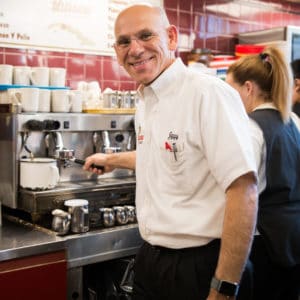
UNION CITY, NJ 10/18/2018 HUMANS OF HUDSON COUNTY: Ignacio Alfonso, owner of a popular Cuban restaurant called El Artesano Restaurant.
Ignacio Alfonso is one Cuban who has previously lived in Union City. While he may not live in the area anymore, he is now the owner of the popular Cuban restaurant, El Artesano, in Union City, New Jersey. This restaurant is situated on the bustling street of Bergenline Avenue, the heart of Union City. Alfonso has had a firsthand look at how the community has changed throughout the years, through the demographics of his restaurant’s customers. “I don’t live here anymore… but I come here to work every day, and I like it. It’s a great community. It’s our culture, regardless if it’s Cuban or not. It’s still a Latino culture,” said Alfonso.
Despite the changes in demographics, Cubans are welcoming of other communities that have moved into the area. Mirta Mendez immigrated to America after the Cuban Revolution and has lived in Hudson County for 53 years. “I feel comfortable with people of every nationality; we’re all human. We’re all one and the same. We’re all on the same level in life. We’re not more than others,” said Mendez when discussing the new Latino and Hispanic communities that have recently moved into the area.
No matter how many Cubans live in the area, they have made a lasting impact on the county through businesses, eateries, and statues. One popular Cuban restaurant is called Rumba Cubana, where authentic Cuban food is served. Cuban music constantly plays, as patrons enjoy the Caribbean aesthetics of the restaurant that overlooks the Hudson River, and is in Guttenberg, NJ.
Another eatery is a Cuban bakery, located on Bergenline Avenue, in Union City. It is called Las Cubanitas, where Cuban baked goods are served, along with classic Cuban cafecitos, or espresso.
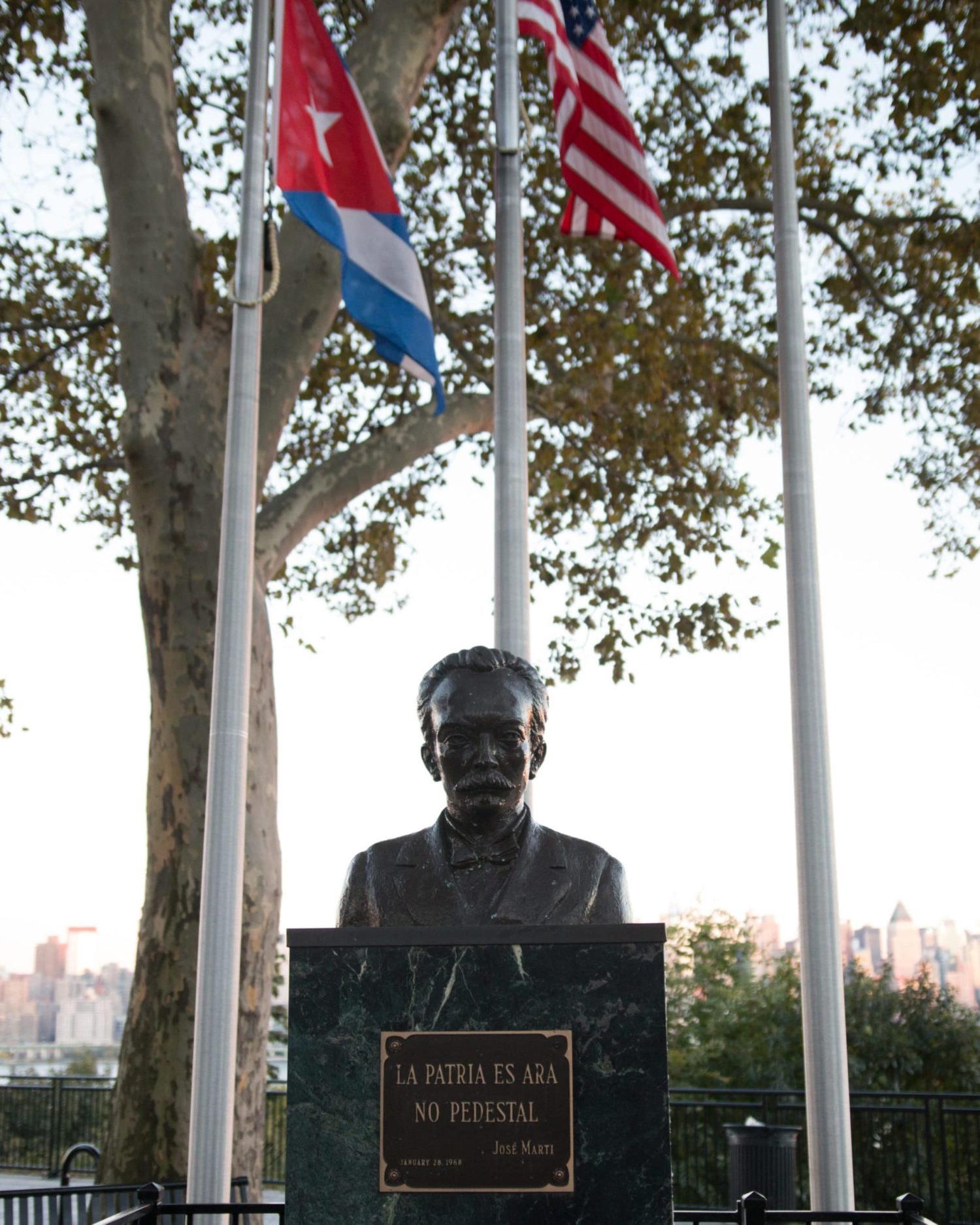
WEST NEW YORK, NJ 10/30/2018: HUMANS OF HUDSON COUNTY: A statue of a Cuban revolutionary, José Martí, stands before the Cuban and American flag overlooking the Hudson River.
There is one area of Hudson County that honors Cuban history. Located in Veterans Memorial Park, West New York, stands a bust of a Cuban revolutionary, José Martí. His bust is placed before the Cuban and American flag, as it overlooks the Hudson River. Below the bust reads a quote by Martí, “La patria es ara no pedestal,” and this translates to, “The Motherland is an altar, not a stepping stone.”
Another statue that stands in Veterans Memorial Park is one honoring the Cubans who have lost their lives fighting for freedom in Cuba. The statue states, “To all those who have struggled for Cuba’s freedom,” and below the phrase is a timeline which says, “1959— Until the day Cuba is finally free.”
For decades, Cubans have called Hudson County their home away from home. While some may have moved out of the area, Cubans still hold this area dear to their hearts and have made a lasting impression on the area with its culture, food, history, and people.
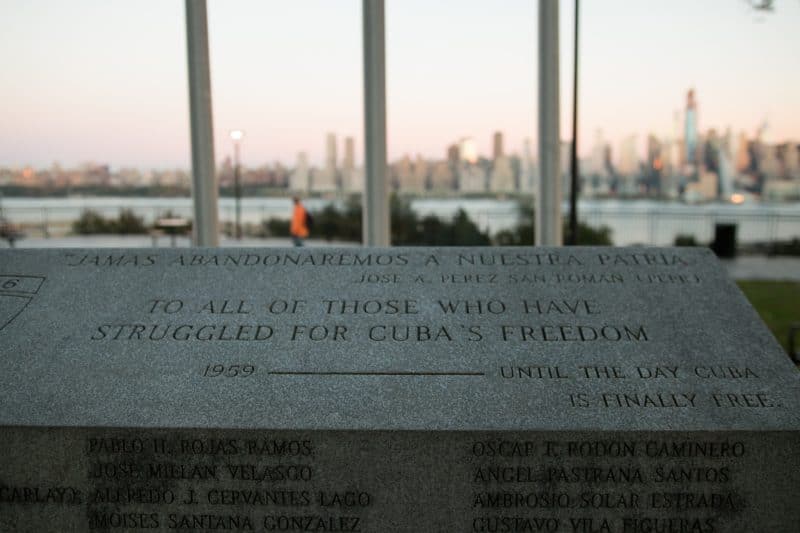
WEST NEW YORK, NJ 10/30/2018 HUMANS OF HUDSON COUNTY: Overlooking the Hudson River, a statue stands honoring those who have fought for Cuba’s freedom.











